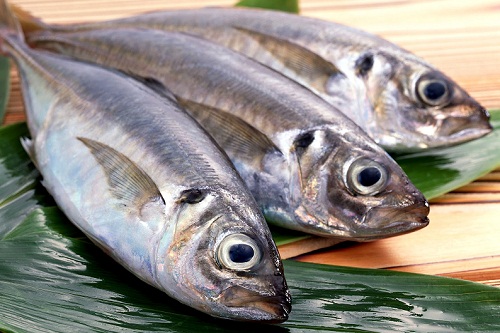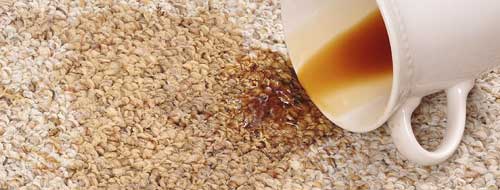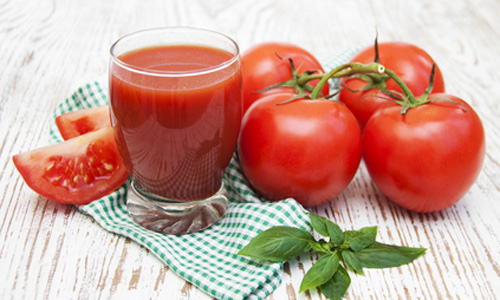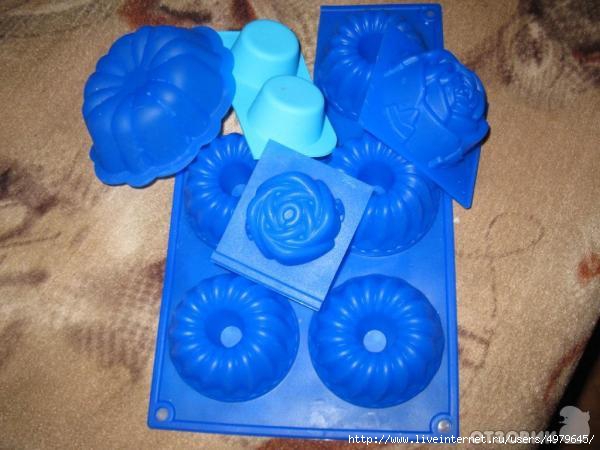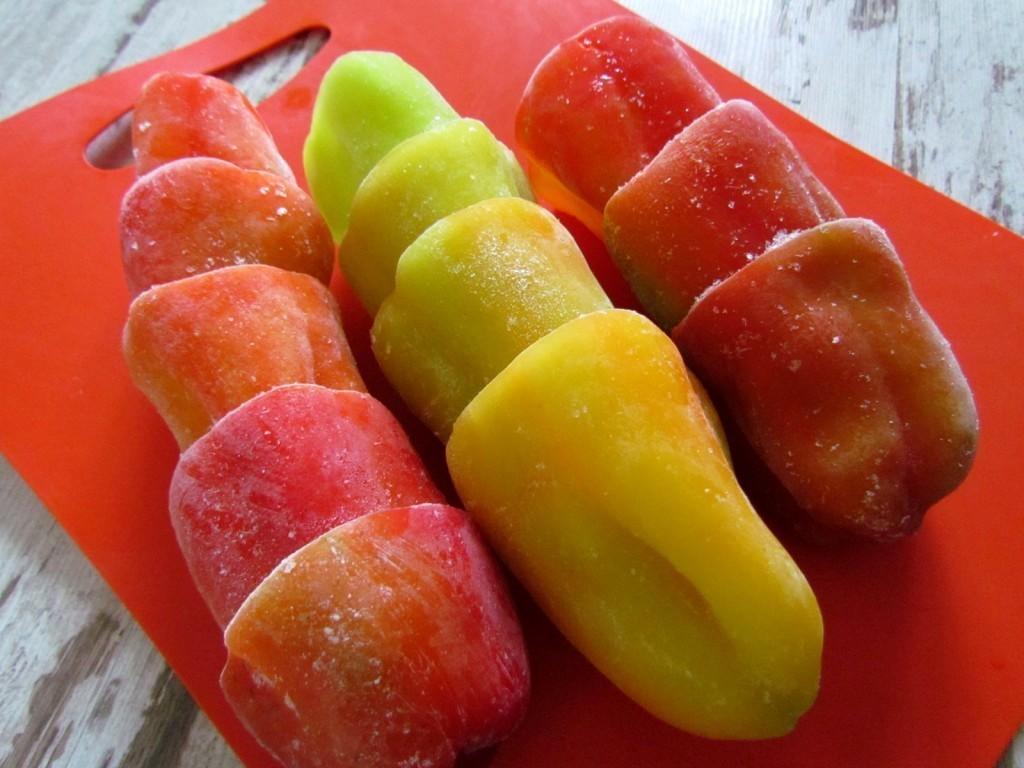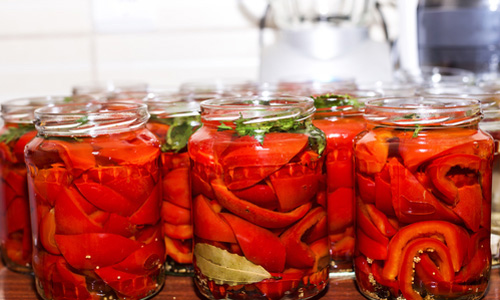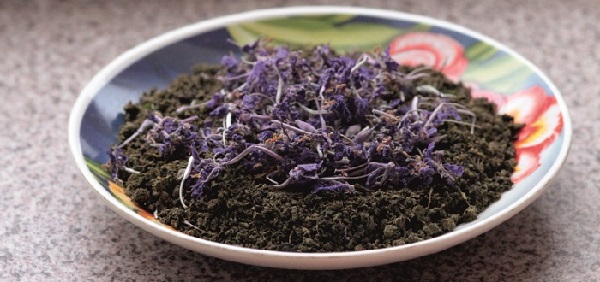The recipe for salting red fish at home in and without brine. Salting and drying fish at home
Salted fish is a favorite snack of many. It excites appetite and satisfies hunger, and partially neutralizes the toxic effect of alcohol, salted fish helps retain fluid in the body. But far from everyone knows how to salt fish at home.
It must always be remembered that fish is a perishable product and for salting there should be only fresh catch and intact. It is better to salt and sluggish winter and spring fish: before spawning, its meat contains more fat, so after processing it has better taste.
It should also be borne in mind that high-quality salted fish is obtained only from those types of fish that are capable of "ripening". These types include:
- herring;
- salmon;
- mackerel.
For salting, they mainly take roach, ram, bream, pike perch, carps, asp, rudd, hamsa, sprat, sardines. Moreover, hamsa, sprats and sardines are salted without gutting them, and gills and viscera are removed from the horse mackerel without cutting the abdomen. Recently, it has become popular to salmon salmon fish, but more on that later.
At home, you can salt fish of any breed, except for sturgeon, salting which requires special refrigeration equipment and professional skills.
Depending on the salt content, salted fish are divided into three groups:
- slightly salted - containing from 6 to 10% salt;
- medium salted - from 10 to 14%;
- highly salted (indigenous) - over 14% salt.
Lightly salted fish is eaten without soaking. It includes:
- fat herring,
- mackerel;
- horse mackerel.
Medium-salted and highly salted fish should be soaked in water at 12–15 ° C before consumption. The more salt the fish contains, the longer it should be soaked. With prolonged soaking every three to four hours, you need to take a break for two hours for a more favorable redistribution of salt.
Salted herring, mackerel and horse mackerel can be soaked not only in water, but also in cold milk diluted with water, strong cold tea brewing. With this soaking, the fish loses less extractive substances.
Lightly salted fish can be used for cooking spicy or pickled fish. To do this, you need to prepare a decoction from a set of spices. You can add to it a one percent solution of acetic acid.
Coarse salt is used for salting. Its main purpose is to remove moisture from the fish, and not to give it taste or to preserve the effect. Coarse salt at a low temperature dissolves slowly and requires moisture, which it just pulls out of the fish. With fine salt, this effect does not work, it kind of “burns” fish meat, quickly salts, but does not dehydrate it. When salting, fish produces brine, that is, brine, which is obtained by dissolving salt in the juice that comes out of the fish. So that in brine when salting does not have time to multiply spoiling the product microbes, it is periodically drained. Salt for salting should be clean, without any impurities.
Small fish ambassador
It is best to salt the fish in a stainless, not passing brine dishes - an enameled bucket, a barrel.
Salt consumption per kilogram of fish
- with moderate salting - 150 g;
- with a strong ambassador - 250-300 g.
To protect the fish from spoilage, saltpeter is added to the salt in a ratio of 1:10 (one part of saltpeter per 10 parts of salt).
You can also salt the fish in a box and on a clean mat, however, in this case, the salt concentration in individual parts of the fish turns out to be uneven, and the salt consumption increases by one and a half to two times. It is necessary to salt the fish in a cool place.
Very small fish (sprats, kilka, hamsa, hley, etc.) can be salted without cutting.
Rinse the fish thoroughly in cold water. After washing, the water is allowed to drain, but so as not to dry the fish. Then the fish is mixed with salt so that the salt adheres to the surface of the fish. Then, not letting the brine formed drain, you need to put the fish in the dishes. A load is placed on top of the fish - a wooden plank or a circle crushed by a stone. The load is needed in order to ensure constant immersion of fish in brine. Duration of salting - from one to three days.
When salting, you can add various spices to the fish: bay leaf, black and allspice, caraway seeds, cloves, currant and blackberry leaf.
Medium Fish Ambassador
Gutting fish weighing over 300 (up to 500) g, making a longitudinal cut in the middle of the abdomen.
All entrails, including caviar or milk, are removed. The abdominal cavity is thoroughly washed and filled with salt, paying attention to the fact that there is more salt in the area of \u200b\u200bthe gills. Then the fish is placed in a clean bowl with the belly up. Each stacked row is sprinkled with salt. A layer of salt is also poured on top. Duration of salting - from three to six days, depending on the thickness of the fish.
Big fish ambassador
Large fish (over 600 g in weight) are plastered before salting: each fish is cut along the back, all entrails are removed through an incision in the back. The head is cut to the middle of the upper lip. In the fleshy parts of the back, longitudinal sections are made.
After that, the fish is thoroughly washed, sprinkled with salt on the surface of the cuts and placed in a flattened dish with the backs up. The residue of salt is sprinkled on each stacked row, as well as on top. The ambassador lasts from five to ten days.
In contrast to the salting of small fish, gutted and flattened fish with a load on top does not need to be pressed. When the fish has salted, it should be thoroughly washed in brine, and then tightly laid in a barrel or box. The container is covered with burlap soaked in brine and stored in a cool place - in the cellar or on the glacier. High-fat fish is better stored in brine under cargo.
Ways of salting:
Dry ambassador
At the bottom of the basket or wooden box lay a clean canvas rag or burlap. Prepared fish is laid on it in dense rows, head to tail, belly up and sprinkled with salt. The total consumption of salt is 1.5 kilograms per 10 kilograms of fish. On top of the fish they put a lid knocked down from a tree and heavy oppression (stone) is placed on it. It is absolutely necessary, as it prevents the formation of air cavities in which putrefactive bacteria can develop, and, in addition, makes the meat of the fish more dense. After some time, juice is released from the fish, it flows out through the cracks between the rods of the basket or the boards of the box. On the 5-10th day, the fish is salted. All this time she should be in a cool place (refrigerator, cellar).
Wet ambassador
The fish is laid in layers in non-oxidizing dishes (bucket, pan, tank, barrel) also belly up and pour salt with the rate of 1 kilogram per 10 kilograms of fish. To give the fish a special, delicate taste, add a tablespoon of granulated sugar to the salt. A circle is put on the fish, knocked down from boards or sawn from a single piece of wood, preferably from linden or aspen (a circle from a tree of these species does not emit tar or tannins and does not deform in brine). After a day or two, the formed brine (brine) covers all the fish, in a cool place it is well preserved. Usually on the 3rd to 8th day (depending on size) the fish is completely salted. Then it must be taken out of brine, washed in running water, air dried and put in a wooden box or storage basket. After this brine is usually poured. You can cook fresh brine, dissolving a kilogram of salt in three liters of water. The resulting solution is poured into the fish laid in a container. This method is also called wet and is used when salting small fish.
Sagging ambassador
For fatty fish apply sagging ambassador. The fish is suspended on transverse rods in saline so that the carcasses do not press against each other. The density of the solution is determined using raw potatoes: it should not sink. After 5-7 days, the fish can be eaten.
Valuable Tips
. Small fish are ready in 2-3 days, medium - in 5-10, large - in 7-10 days.
The duration of salting in a refrigerated room, for example, in a cellar with ice, of such fish as bream, asp, pike - up to 12 days, carp and pike perch - up to 15 days, in uncooled - up to 5-7 days.
Salting of fish consists in its dehydration and replacement of part of the water in the tissues with salt. Therefore, the criterion of readiness can be considered "tanning" of the fish - it becomes hard and bends badly.
The ambassador of frozen fish is rather complicated, when thawing, the structure of tissues is violated, therefore, frozen fish “takes” a lot of salt. It is difficult to catch the moment when the fish is already salted, but not yet salted, like brine.
If the fish is oily, do not be afraid to salt it - there is very little water in fatty tissues, so the fish will not “take” a lot of salt. If the fish is salted for drying or smoking, then after salting it should be soaked for two to three hours, often changing the water.
In the process of salting and drying the fish, it is necessary to protect the fish from flies. To do this, the container with salted fish is covered with gauze, and the fish hung out for drying should be carefully covered with gauze on all sides for the first week (usually the fish is hung out for the first week in a wooden box tightly closed on both sides with gauze, then dried fish can be hung out for drying without gauze) - flies no longer lay their larvae on dried fish).

In a deep dish we spread part of the mixture, and on top we put a piece of trout down with the skin and sprinkle with salt and spices. Then sprinkle the fish with lemon juice. Put a second piece of fish on top, sprinkling it with a salting mixture. Next, put on the trout oppression and put the dishes in a warm place for a couple of hours. As oppression, you can use a two-liter jar of water. After two hours, we remove the load, close the pan with a lid and put it in the refrigerator. How long does it take to salt red fish (trout)? The salting process lasts one to two days, depending on the thickness of the pieces of fillet. During this time, a brine will appear in the dishes until it needs to be drained. But as soon as the fish is ready, you need to remove both the liquid and the pickling mixture. And wipe the fillet with a napkin. Trout is ready to eat.
A few quick recipes
How to salt trout at home tasty and fast? There are some quick cooking recipes.
Rub pieces of fillet with salt and sugar, add dry dill and a little vodka. All ingredients are taken in small quantities. We put the fish in a container and crush it with oppression for several hours. Then, after two hours, we send the pan to the refrigerator. Six hours later, the trout is ready.
There is another recipe for quick salting. Trout must be cut into thin slices, and then layered in a jar pieces of fish, pepper, salt, bay leaf and olive oil. All spices and their quantity need to be selected independently to taste. You can experiment with components. So, for example, you can add lemon or orange to the jar. The dishes are closed, shaken several times and put in a cold place for six hours. The fish is ready.

Trout can be salted in ten hours. For one kilogram of fish, you need to take three teaspoons of salt and half a glass of refined oil. Wipe the cut fish with napkins and cut into pieces. We put the slices in a bowl, salt and fill with oil, mix all the components well. Next, put the pan in the refrigerator. Ten hours later, the trout is ready.
Instead of an afterword
In our article, we have presented the main ones. As you can see, there is nothing complicated in self-cooking delicacy. The main thing is to be able to choose a quality product. And then the salty red fish will be very tender and tasty.
Russia is a country of real men! And every real man from time immemorial was a breadwinner and breadwinner! The ancestors of our peasants brought to their families personally caught game and fish, for which they received love and respect from wives and fellow tribesmen.
The modern "right men" have preserved an irrepressible craving for hunting and fishing, although they bring home much less game and fish than their ancestors.
Nowadays, Russian men often spend free time fishing, constantly bring home caught fish. Many people have a question - how to process your catch to get a tasty and healthy product? It would seem that it’s complicated - he poured salt over the fish, after a certain time he hung out to dry and that’s it, the fish is ready to eat. However, getting a tasty dried fish at home requires some knowledge and experience.

Today I will tell you how to salt fish at home. This salting recipe is based on the many years of personal experience of the "fisherman-getter."
So, the recipe for salting fish at home
Salt
Salt for home fish salting is best used with the so-called rock salt, i.e. coarse grinding. Fine salt of the Extra brand is not suitable for salting fish, since it immediately forms a kind of salty carapace on the surface of the fish, which prevents the liquid from leaving the fish meat.
Categorically refuse the use of iodized salt, otherwise you just ruin the fish.
Tableware
For salting fish, it is better to use enameled and stainless dishes. Wooden barrels are perfect for salting a large number of fish. Do not use dishes made of oxidizing materials and plastic to salt fish. You salt the fish for yourself and your family!
Fish
Before salting, fish should be washed in clean water, the ideal option is to wash off all (!) Mucus from the fish. There is a widespread opinion that if you do not wash the fish before salting, it will turn out tastier. Absolutely wrong opinion! Left slime on the fish together with salt forms a salt shell. This disrupts the natural metabolic process between fish and saline. After washing the fish and removing mucus from it, dry the fish a little - just let it drain.
Before putting fish in salting dishes, be sure to re-sort your catch. The largest and thickest fish should be placed at the bottom of the dishes. Put a trifle on top.
Do not salt fish of different breeds together in the same bowl. There are fish species whose presence in the general salting tank can adversely affect the taste of the dried fish.
So, for example, tench, pike, goby and rudd are best to be salted separately from roach (ram), bream, bream, perch, sabrefish, pike perch, bersh, fish, shemai, bleak. The last 10 listed fish species can be successfully salted together in one bowl.
Salting time
This question is much controversial. My recipe for salting fish is based on personal experience. The quality of the finished fish was subjected to laboratory analysis.
How much to salt the fish :
Fish up to 20 cm long. Salts for 5-6 days. A longer period is indicated for fish with a thicker body and more fat: crucian carp, fish, sewn;
- Fish with a length of 20 to 25 cm. Salts for 7-8 days. A longer period is indicated for fish with a thicker body and fatter;
- Fish longer than 27-28 cm. Must be salted for 8-10 days. In this case, the fish should be flattened, i.e. cut along the spine, expand and remove the insides.
Fish salting technology
At the bottom of a clean, dry dish, salt is poured with a layer of 5-6 mm. Then begin to lay the fish in layers. Each laid layer is also covered with salt on top. In the gills of large fish (longer than 20-22 cm), you can pour a pinch of salt. The last layer of fish is completely covered with salt, oppression is laid on top (a flat plate or dish, and cargo). The weight of the yoke is selected depending on the total thickness of the layers of fish laid. For layers 10 cm thick, it is enough to set the oppression weighing 1 kg. Fisheries producing salting fish in deep containers, such as barrels, use oppression weighing 12 -13 kg.
Oppression prevents the formation of gases and pathogenic microflora in the abdominal cavity of fish.
Temperature mode
The best temperature for salting fish is 6-8 degrees above zero. If the process of salting the fish will occur at a higher temperature - it is necessary to increase the period of stay of fish in salt or saline solution. Salting fish at temperatures above 20 degrees is not recommended.
Soaking fish before drying
Soaking is a mandatory process designed to remove excess salt from fish. However, an erroneous opinion about the duration of soaking is widespread: how many days the fish salts - so many hours are soaked. Absolutely wrong! Fish will not take excess salt. The duration of soaking is 2.5 - 3.5 hours in cool water, the water should be changed periodically.
After soaking, the fish should be thoroughly washed and allowed to drain water. After that, the fish is ready for hanging for drying.
Fish drying
At home, when there are no special rooms or mosquito net protected chambers for drying fish, fish should be hung out for drying late in the evening after dark. The place of drying of the fish should have air movement: a slight breeze, draft or forced ventilation. The dark time of the day will protect against flies that could potentially lay their larvae in raw fish. But in the dark, flies do not fly, the hung fish dries out a little during the night, the next morning the fly does not put off its larvae on dry fish.
If for some reason the fish did not have time to dry during the night, for example, wet weather, night fog, etc. - Lubricate the surface of the fish with sunflower oil. This will be a reliable protection against flies.

Separately, it is necessary to talk about salting of especially fatty fish species: asp, silver carp, shemai, and fish. In summertime and in hot weather, salting such fish should be in refrigerators, glaciers, or in fairly cool cellars. Large fish should be flattened before salting.
That's actually all the secrets of salting fish at home. You salted and hung fish for drying. After 4-7 days (depending on the weather), the fish caught by your hands will be ready for use. Treat yourself and your loved ones a beautiful salt fish!

Bon Appetit!
Dear Reader! Your opinion on the publication is useful for the development of the blog! Please leave your comment! Thank...
Each fisherman has cases when the catch is not just plentiful, but very large, and it needs to be quickly processed so that it does not disappear. The first option is to fry the fish. But if the family is small and cannot eat much, you have to try other processing methods. For example, salt. This is the simplest and most universal method of harvesting, if you know how to properly salt the fish caught in the river. There are many recipes that offer salting fish at home. We will discuss them further.
Spicy salting
For work it is necessary to prepare:
- Tara. It can be a deep bowl or a basin, an enameled bucket, a wooden box. You can take a plastic container. That's just nothing metal can not be used.
- Spices. Must be black pepper and laurel.
- Food salt. It is desirable - not very small, and in no case iodized.
- Cargo. They can serve as a not very heavy stone, a couple of bricks wrapped in a plastic bag, a jar or a small enameled pan with water or any other similar object.
- The lid is slightly smaller than the top of the pickling tank.

Salting fish should be carried out immediately after fishing
This version of salting is designed for perch, bleak and other medium-sized fish. The catch should be fresh, best of all - just caught. You need to choose copies of approximately the same size weighing up to 1 kg.
The catch must be washed and gutted. Next, in salting dishes, salt (0.5 cm) is first poured into the bottom and the fish is laid, starting with larger individuals. Having laid the first layer, sprinkle it with a thin layer of salt on top, add several sheets of laurel, 2-3 grains of pepper, coriander. Then again the fish, salt with spices and so on to the top, or until the fish runs out.
Attention! The time has come to make oppression in order to squeeze out all the air from the fish - the cause of putrefactive reactions. To do this, you need to take the lid, lay it on the fish, and put a “pickle” load on top.
Now you need to move all this stuff to the coolest place in the house (or apartment) for 72-96 hours. After the salting process is over, remove the lid and rinse the fish under running water so that all the salt is washed off. When the water is clear, leave the pan for 60-90 minutes.
Some fishermen argue that it is necessary to keep fish in water for every 24 hours of salting out - 1 hour. For example, if the fish were in salt for 24 hours, then soak for 1 hour, if for 2 days - 2 hours and so on. Then drain the water, cover the table with newspapers in several layers and lay the fish on top to dry.
After 3-4 hours, it will become dry, which means it is ready to eat. This treat has an excellent taste and excellent smell. You can use it with beer, with mashed potatoes and porridge - a universal snack is obtained. Stored fish spicy salting for a long time, but only in the refrigerator. However, it usually does not lie for a long time.
Dry salting
Usually they harvest roach, bulls, perch. They must be prepared in the same way as in the previous recipe - rinse, gut and salt, laying in layers in the selected container. You do not need to use spices, but still some add sugar or their favorite spices. After two, at most three days, fish carcasses are washed, wiped with tissue paper to dryness and hung by the eyes or tail on a rope.
Tip. Experienced fishermen advise hanging the fish over their eyes - so all the bad liquid will easily drain. And if the fish hangs on the contrary, tail up, then a liquid of unpleasant taste and smell will collect in the head.
You need to hang tightly, but in such a way that air passes between the individual carcasses. Moreover, place the product not in the sun, but in the shade. For example, on a balcony or in a room where there is a constant draft. So the catch will be better to dry, and then not damp.
If the process occurs in the spring, when there are no flies, then you don’t need to do anything, just wait until the product is ready, but in the summer period the catch hung for drying must be wrapped in gauze folded in 3-5 layers so that the flies do not reach. If this is not done, then maggots will quickly start in the fish, and it will be unusable. How much to dry the carcass - depends on the taste of the owners. Someone holds it like this for several days, someone - for half a day.
If you caught a large roach, perch, goby (which, though rare, it happens), then you need to gut it and free it from your head. Then - make several cuts along the back from the head to the tail and rub into their salt. You can - with spices. After pouring all the catch with salt, leave it for 8-10 days in a cool room. The emerging brine (brine) needs to be drained every day. After washing, when hanging each individual for drying, a wooden strut is inserted into the abdomen (for example, toothpicks or twigs peeled from bark).

For salting fish you need a press
If the whole process is carried out correctly, then the carcass in appearance will look like a balyk, which is why this variant of salting is popularly called "balyk". The taste of the resulting product is very refined.
Small fish, such as roaches, are even easier to salt, since they do not need to be gutted. It is washed, salted, put in layers, and placed in a refrigerator for 3, maximum 5 days. Then the product is washed, kept in pure water for an hour. After that, they are dried on paper towels and the carcasses are hung on a thread or on a skewer. The catch is drained from 5 to 10 days - it all depends on the size of the roach and the air temperature on the street or in the room where the product is dried.
Wet ambassador
The process goes like this:
- Fishes need to be laid belly up. To salt. For 1 kg of catch - 100 g of salt. To make the taste more tender, you can add sugar - 0.5 tsp.
- Lay the lid on top, the circle - which fits under the pickling container. You can make a circle of linden, aspen.
- Put the container in a cool room for 4-8 days. The prominent brine should not be touched.
- Remove the fish from the liquid, rinse. Dried in the open air.
- Store in a basket. You can use a wooden box.
If the fish is small, it can be immersed in brine for salting. Prepare it from 3 liters of water and 1 kg of salt. Next - rinse, dry and store.
Sagging ambassador
It is used for fish of fatty varieties. Large representatives of fish are prepared and suspended on rods. Then - placed in a saline solution. The brine should be so salty that the raw potato pops up. It is necessary to place the carcasses so that they do not strongly squeeze one another. After a week, the product can be taken out of brine and, washed and dried, eaten.

If a big catch caught in the summer heat far from home, you can do the following:
- Salt fish carcasses in a large plastic bag.
- Bury the bag in the soil (it doesn’t matter if it is sand or earth). The depth of burial is 0.7-1 m. The soil layer will serve as protection against heat and at the same time as oppression.
- To prevent moisture from dew or rain from entering the bag, a small bag must be put on the neck.
If the fish carcasses are large in size, then they must first be gutted, wiped dry (you can’t wash it!), Cut off the head and tail. Grate each carcass outside. Pour salt into all sections and the inside. Wrap a clean burlap. You can use a tissue napkin. Wrap tightly with twine, bandage. Before cooking, the carcasses are soaked using milk or water. Then they cook - boil, stew, fry. The choice of option - to taste. You can eat raw, seasoned like a herring.
Tip. If a large catch was caught in the winter and thoroughly frozen on the way home, it is not worth salting such fish: after thawing, the structure of the tissues is already broken, therefore, it accumulates a lot of salt. Because of this, it is very difficult to catch the moment when the carcasses are salted and fish can be significantly salted. In addition, when soaked and suspended, carcasses can disintegrate. The best surviving freeze and thaw catch is processed to stew.
Salting of large river fish: video
How to pickle river fish: photos




Drying and drying fish is one of the ways to harvest it for the future ...
Its peculiarity lies in the fact that after a certain period of time, pre-salted fish is dried (dried) in a dry and well-ventilated place.
As a result, it becomes edible without preliminary heat treatment.
During storage, the moisture and fat content in the carcass of dried fish gradually decreases, it becomes drier, which is why it is also called dried.
Not all types of fish are sluggish, but only those whose meat, as it were, matures in the process of natural drying, acquiring a specific taste and aroma.
It is best to sluggish fish of medium fat content. If they are not large, then whole or in the form of layers cut from carcasses along the spine, or pieces (weighing about 100 g), cut across the layer.
Ram, roach, roach, booster, scavenger, bream, fish, sabrefish, glue, ide, shayem, bacon, perch, pike, carp, capelin and some other fish are the best dried.
As a rule, small-sized fish are salted and dried up without being gutted. At the same time, subcutaneous fat and fat of the insides of the fish impregnate meat during drying, and the fish becomes much tastier.
It is recommended to cook dried fish in spring or autumn from oily or medium-fat fish.
It is not recommended to cook dried fish gutted in the summer, since most herbivorous fish eat greens, which decompose in the process of drying and gives the fish an unpleasant odor and a bitter taste.
The process of drying fish consists of three main stages:
- salting;
- soaking;
- drying.
PICKLING
As a rule, when salting fish for drying, two main methods are used:
- wet or acetylous;
- dry.
Wet method of salting is not very large fish (250-500 g): roach, silver bream, scavenger, rudd, fish, czech fish, asp, perch and small pike.
They do not wash the fish, but only wipe them with a dry towel.
For salting use only coarse salt. The purpose of the salt is to remove moisture from the fish, and not to give it a special taste: it itself has an excellent fish aroma. Coarse salt dissolves more slowly and absorbs more, sucks moisture out of the fish.
A little salt is poured into the bottom of an enameled bucket, pan or basin. The fish is laid in tight rows: with the head to the tail, the back to the stomach, and even better - the back to the abdomen: it will act better in this way. Each row is plentifully salted. So much salt is poured on the top row to cover all the fish. For a special taste - add a little sugar. A wooden circle or an enameled lid from the pan is placed on top of a smaller pan, and it bends on it. Severe oppression prevents the formation of gas bubbles and cavities in fish, in which putrefactive bacteria can develop.
4-5 hours after salting, the fish itself launches brine. This is the so-called brine.
For the entire period of salting, the fish must be placed in the coldest place as possible.
Salt very slowly penetrates fish meat, and where the fish has not yet had time to salt, it is protected from damage by cold. At home, you can salt the fish in the refrigerator, in the cellar, on ice. In field conditions, it must be placed in a hole dug in a cool, shaded place, and covered with branches or tarpaulin from above to protect from sunlight.
After 2-3 days (depending on the size of the fish), the back of a normally salted fish becomes hard, the meat becomes dark gray, and the caviar becomes yellowish red, if you pull it by the head and tail, it creaks.
In the brine method, a quantity of salt is dissolved in a bucket of water so that the raw egg placed in the brine floats on the surface.
Fresh fish is immediately strung on twine or twine for 5-10 pieces and dipped in cooked brine so that the brine covers it completely. Small fish salted in 2-3 days. After this period, the fish is removed from the bucket, washed in water for 20-30 minutes and hung out for drying.
If the fish is large and there is a desire to wither it whole, that is, not gutted, then before immersing in the brine, the salt solution is pumped into the belly of the fish through the mouth with a rubber syringe or syringe.
For camping conditions, there is a kind of wet method of salting fish: it is sprinkled with salt on some plate, stuffed with salt in the mouth, under the gills and placed in a plastic bag. Then a plastic bag with fish is buried in a pit on the river bank or near a spring, while ramming the tubercle properly: it will be natural oppression.
Dry method salted larger fish - weighing more than a kilogram.
Each fish is cut along the back and crucified. Remove the insides, then wipe them with a dry cloth. Inside, the fish is abundantly sprinkled with salt, but, of course, not so that then it was impossible to take it into the mouth: everything should be in moderation. The carcasses of fish are stacked in rows in a wooden box so that the abdomen are directed upwards, and salt is also added to the scales on top. The box is placed in a hole dug in a cool place, covered with plastic wrap on top.
Depending on the size of the fish, the ambassador lasts from 3 to 7 days. In the process of salting, the fish also releases its juice, but it immediately flows out of the box through the cracks. This is the meaning of dry salting fish.
In a dry way, you can also salt small gutted fish. On a wide board or on plywood, lay any clean rag, fish are placed in rows head to tail and always so that the back of one rests on the abdomen of the other. Fishes are laid in rows on top of each other, sprinkled with salt and wrapped in the same rag. On top of the “package” cover another board or plywood, and put oppression on it. Tuzluk secreted from fish will seep through the tissue and flow to the ground.
Soaking
Salted fish is washed with cold running water. If the consistency of its meat is very dense, then the fish is soaked in cold water for 5-10 hours, changing the water 2-3 times. It is believed that fish should be soaked for as many hours as how many days it has been salted.
The amount of salt remaining in the fish after soaking should be in the range of 5 to 7%.
The golden mean of soaking comes at a time when salted fish begins to emerge. This is exactly what is required: the ambassador will become tender, the back of the fish will be amber-transparent in light, and after drying, the meat will become reddish.
DRYING
Before drying the fish, lay it in rows on paper so that it dries slightly, and then string it onto a twine or a strong cord. If you dry fish in winter, it is best to hang it in the kitchen near a gas or electric stove.
If the fish crashes in the summer, when it is likely that it can be spoiled by larvae of flies, they recommend dipping the slightly dried fish in a solution of 3% vinegar. You can also grease the fish with sunflower oil or a solution of potassium permanganate. Fish is hung in specially made boxes from boards and gauze or nets (see Fig. 3-5).
Install the boxes together with the fish in a well-ventilated, sunny place and make sure that they do not get rain.

Fig. 3. Drying fish under a gauze canopy

Fig. 4. Fish dryer (dimensions in mm):
/ - wooden case; 2 - mesh; 3 - clamps; 4 - pens;
5- door; 6- rods; 7- door hinges
How to hang fish for drying: if by the tail, then the fat will flow out of the peritoneum through the mouth or gills; if for the head, then the ram, for example, will remain all with fat in the peritoneum.

Fig. 5. Box for drying fish
Usually fish such as a fisherman, a bacon, a shamite are hung upside down, and such as a chekhon, a bream, a ram, a pike perch, head up.
With the help of a shoe needle, twine is pulled through the eyes, and so that the fish on the drop does not slide to each other, the lash on the head is done twice.
It is better to hang fish at night until there are no flies. When the fish dries and the gills are crusted, the flies are no longer dangerous for the fish.
The best temperature for dried fish is considered to be 18-20 degrees. C. Depending on the size of the fish, drying lasts from 1 to 4 weeks.
Well-dried fish does not have a salt protruding on the surface, its structure is clearly visible in light. After removing the skin with scales, a layer of fragrant shiny fat is indicated, the meat is dry and resiliently stiff. Sun-dried fish after drying in air should ripen for some time (from three weeks to a month). It is better to store it in a fabric bag in a cool, blown place, wrapped in parchment or in tin boxes.
FISH CREATED RECIPES
Fisherman
Pre salted fish in brine - brine. Salt in water (brine) is placed before the specifications, until it ceases to dissolve.
The fish is stacked with its backs up, poured with brine, pressed with a little oppression. Salting lasts for five days, and in cool weather - up to ten.
After pulling the fish out of brine, it should be dried in the shade for two days and only then soaked. After that, you need to hang the fish in the breeze, but in the shade - head down.
In the heat of each fish, it is necessary to release internal air in front of these hands.
Ram and roach
For drying ram and roach, cool dry, calm days of early spring are most favorable.
During this period, the fish has not spawned, so it contains the largest amount of fat and has the highest weight.
Atmospheric and temperature conditions at this time of year are also most suitable for successful drying.
Depending on the size of the fish, the ram and roach are dried for 13 to 30 days.
Carp
Fish are cleaned of scales, entrails are removed, heads and tails are cut off. The prepared fish is salted with dry or wet salting and kept for ten days, then washed, filtered and lightly salted with a salt mixture with two percent nitrate. Suspended in a ventilated place and dried for 2-3 weeks.
Ready fish is packed in boxes having ventilation holes on both sides. For the same purpose, sticks (slivers) are placed between the individual fish. In a dry ventilated place, such fish can be stored for up to one year.
Bream and scavenger
The fish is placed in a wooden barrel or an enameled bucket in a salt solution at the rate of 1 glass of salt per 1 liter of water. A circle is placed on top of the fish, and on it is a heavy object (oppressed) and kept in this position for 2-3 days. Then the fish are washed in cold water and hung in the shade in the breeze.
The fish is dried for 10-15 days.
Chekhon
Gutted fish, carefully remove blood near the spine, take out the gills, make an incision along the ridge from the inside, without damaging the skin. The scales are not removed. The cut fish is placed in a salt solution (125 g of salt per 1 kg of fish) and crushed on top with a small plate with a small load.
Small fish is salted out in 5-10 hours, large - from 12 to 20 hours.
Keep the fish in brine in a cool place.
Mackerel
Sun-dried mackerel is prepared from spring catch fish after spawning. Gutted fish, pulling the insides through the gill covers, without cutting the abdomen. Then it is washed, suspended in pairs, passing a thin twine or a thick thread through the tail, and immersed for 8 hours in brine (25 grams of salt are added to 1 liter). Then it is washed with cold water and suspended for drying on rods. Drying takes about two weeks.
Dried smelt and other small fish
The fish are gutted and wiped with linen cloth. Then, in an enameled bowl, salt along with spices (put a lot of salt). It is kept for 1-2 days, then the brine is drained, the fish is dried, stringed on a rope or wire threaded through the eye sockets, and dried under a roof on the sunny side in a well-ventilated place or in a non-hot oven on straw.



